|
Nominations for the FAHS Merit Award
|
|
|
Nominations for the FAHS Merit Awards for 2017 close on 30 June 2017.
The Merit Awards are awarded as recognition of a meritorious contribution to the community history and heritage movement nationally and/or in more than one State or Territory and/or a contribution at State/Territory level which has had national implications.
Information about the awards (including a list of previous recipients) is available on the FAHS website: www.history.org.au/Merit%20Award.html
The guidelines (in PDF format) and nomination form (in PDF and DOC format) can be downloaded from the website.
|
|
|
Local Collections Matter ! - Call Out for the FAHS Survey on Collections
|
|
|
Join the survey https://www.surveymonkey.com/r/ZWLYLTN Your responses help to ensure that community, regional and diverse voices survive into the future.
Local Collections are a vital link in telling the full story of our heritage. The FAHS is documenting how societies across Australia are collecting, preserving and making available local and nationally significant heritage. The survey will gather information on a range of topics relevant to collection management including: the nature and size of your collection; the importance of different parts of your collection; cataloguing; collection policies; access to the collection and forward planning.
This information will assist the FAHS in its work of promoting society needs and interests, and of seeking recognition and support from government and the community. We encourage all societies to fill in the survey even if your collection is small or only partially catalogued. This data is critical to gather information on sustainable practice and argue for the importance of community collections.
|
|
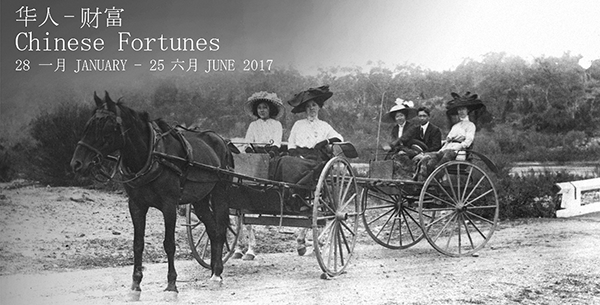
|
|
Images: above: Maud & Dolly Nomchong with Sydney friends in sulkies on the Bombay Bridge outside Braidwood; bottom L: Dolly Nomchong wearing her mother's wedding dress to a fancy dress party around 1910; bottom R: Tea Cup and Saucer (c. 1890) Hand-painted famille rose pattern, glazed porcelaneous stoneware.
The tea cup and saucer and photographs from the Braidwood and District Historical Society are just a few examples of the important items held by volunteer run historical societies. These items are on temporary loan to the Museum of Australian Democracy at Eureka for the exhibition 'Chinese Fortunes'. The exhibition explores the individual stories of early Chinese Australians in colonial Australia.
|
|
|
The FAHS History Clinic Open - Tuesday afternoons by appointment
|
|
|
FAHS Outreach Office History Clinic is Open
The Dr is in the house Tuesdays 1pm-4pm by appointment
|
|
Want help setting up email campaigns?
Need advice on scanning, image resolution, data management ?
Confused about how to develop an interpretation plan ?
Trying to sort out the web; Facebook; Flickr; Instagram ?
|
|
|
Dr Bernadette Flynn the FAHS Outreach Office is available at History Clinic to assist with practical questions about running your historical society. Dr Flynn has professional expertise in image management, video, multimedia and has a particular interest in activating collections and historical interpretation.
Lodge a request via email and book in for a session fahsbflynn@gmail.com
Sessions will be conducted online.
Further Information fahsbflynn@gmail.com or phone 02 4377-1682
|
|
|
Funding Boost for National Library of Australia's Trove service
|
|
|
The National Library of Australia has been given a funding boost including an upgrade its popular digital resources portal Trove.
After cuts through the government's efficiency dividend were announced in late 2015, the library had stopped funding the digitisation of newspapers and other content in July. The NLA had also requested that contributors provide funding if they wished to expose their collections through Trove.
The funding allocated in the mid year budget review includes $16.4 million over four years from 2016-17 for digitisation of material and upgrade of critical infrastructure for its Trove digital information resource and to upgrade other critical infrastructure.
The National Librarian has put out a circular to staff giving more detail on how the money will be spent to ‘enable the Library to support Trove to meet Australian’s expectations for continued and contemporary access to large-scale digital collections; to upgrade critical Information Technology infrastructure; and to support other vital programs and services’.
Trove is the commonwealth's fourth most heavily used website, behind the Bureau of Meteorology, Centrelink, and the Department of Human Services, with more than 55,000 visitors a day.
Further information: http://www.sbs.com.au/news/article/2016/12/20/library-gets-boost-help-deliver-trove
|
|
|
#makeheritagefun - A UNESCO social media campaign
|
|
|
|
 26 March is 'Make Heritage Fun!' day - a UNESCO social media campaign to draw attention to heritage 26 March is 'Make Heritage Fun!' day - a UNESCO social media campaign to draw attention to heritage
Groups of people attract attention and groups of people acting together can attract even more attention (think trending hashtags). The prime goal of a "Make Heritage Fun!" event is to draw attention to heritage by creating both online buzz and offline conversations. The events are intended to bring together people interested in heritage and start these conversations.
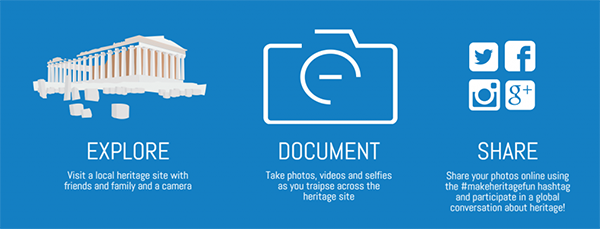
At its simplest, a #makeheritagefun event has three steps - Participants EXPLORE a local heritage site, DOCUMENT it by taking spectacular photos and videos, and SHARE them on social media using the #makeheritagefun hashtag. #makeheritagefun events are held simultaneously all around the world - in 2017 on Sunday 26th March. Participants can do this solo, with friends and family, or in large groups. Sometimes they plan other fun activities at the heritage site too.
To join the global make heritage fun project
|
|
|
Budj Bim submitted for UNESCO World Heritage Listing
|
|
|
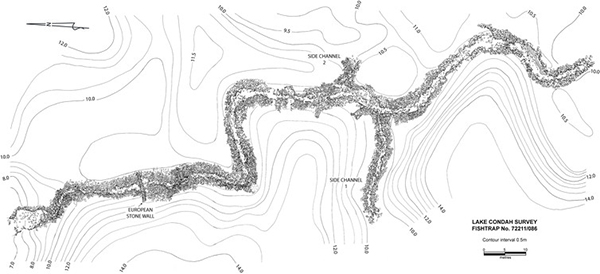 A Image: 200 metre long fish trap channel mapped by Peter Coutts’s team at Lake Condah. Victoria Archaeological Survey A Image: 200 metre long fish trap channel mapped by Peter Coutts’s team at Lake Condah. Victoria Archaeological Survey
Sacred to the Gunditjmara people, the Budj Bim National Heritage Landscape at Lake Condah in Victoria's south-west is home to the remains of potentially one of Australia's largest aquaculture systems. Dating back thousands of years, the area shows evidence of a large, settled Aboriginal community systematically farming and smoking eels for food and trade.
For thousands of years the Gunditjmara people flourished through their ingenious methods of channelling water flows and systematically harvesting eels to ensure a year-round supply. Here the Gunditjmara lived in permanent settlements, dispelling the myth that Australia's Indigenous people were all nomadic. This complex enterprise took place in a landscape carved by natural forces and full of meaning to the Gunditjmara people.
The Budj Bim National Heritage Landscape was included in the National Heritage List on 20 July 2004. In recognition of Budj Bim’s outstanding heritage value the Australian Government provided a submission to the UNESCO World Heritage Centre in January 2017 to include it on the World Heritage Tentative List.
If the nomination is accepted a formal World Heritage nomination will be developed by the Victorian Government and Traditional Owners with support by the Australian Government. Australia has 19 World Heritage properties, Budj Bim would be the first Australian place to be nominated solely for Indigenous cultural values.
Further information: http://www.environment.gov.au/heritage/places/national/budj-bim
http://theconversation.com/the-detective-work-behind-the-budj-bim-eel-traps-world-heritage-bid-71800
|
|
|
Featured Historical Society - Carnamah Historical Society
|
|
|
Carnamah is a town and farming community 300 kilometres north of Perth in the Mid West region of Western Australia. The Carnamah Historical Society has embraced digital media to promote their collection and curriculum education resources through a vibrant web and social media presence. The website hosts a virtual museum, which tells local history stories through objects to create an engaging sense of the social interactions in the past. One of the permanent online exhibitions 'Schools' outlines the realities of a country education where children, mostly of farmers and railway workers accompanied their parents onto farms in the bush and railway camps along the Midland Railway. Travel to schools was by horse, buggy or on foot.
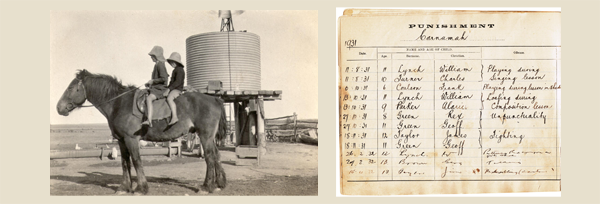
Image: L: Students leaving for school on their horse Laddie; R: Page from the punishment book of the Carnamah State School from 1931
The society has been successful in securing grants for project work. From 1979 to 2004 the Carnamah Apex Club, Carnamah Restoration Society and the Carnamah Historical Society restored the Macpherson Homestead with locally raised funds and grants from Lotterywest. The state heritage-listed homestead and its outbuildings were among the first buildings in the district in the late 1860s can be visited at any time - a donation tube is on site.
There are about 10,000 items in the collection, which have been given to the museum from local donations and former residents. Records are being continually updated and include a biographical dictionary, cemetery records, historical photographs and the recent addition of an index of early WA motor vehicle registrations. The society currently runs a paper based accession register, which is being digitised, and showcases objects through its Virtual Museum, blog and on Pinterest. The State Library of WA nominated the society's website for the national archive, so material is also available through Trove. Recently the society has been awarded a Community Heritage Grant for a significance assessment of the museum collection. Securing this grant means that the collection has been deemed to be of national significance and the assessment will assist in detailing individual items of national significance. The society has a policy of sharing material and operate under a creative commons licence where any content can be freely shared providing that the society is attributed. Entry to the museum is free (they consider that as much money comes by way of the donation box as would be collected through a small entry free). The building is owned by the council who cover rent, rates and utility costs.
Other grants have been awarded from the Department of Culture, the Western Australian History Foundation and the Arts and a Social Innovation Grant for establishing Virtual Volunteering. Virtual Volunteering engages volunteers remotely to assist with transcribing documents. The innovative work of the society has been recognised through a Museums and Galleries National Award (MAGNA) in 2014 and were highly commended for a suite of Australian Curriculum Resources and for excellence in the West Australia Heritage Awards in 2015.
The virtual curator & local historian Andrew Bowman-Bright believes the success of the society is due to a good organisational ethos where doing something different is not seen as a problem. The main challenge is that faced by smaller organisations - the society has about 12 members, with only 6 or so active and at times their ambitions stretch capacity. The extended digital presence across Facebook, Twitter, Instagram and Pinterest means that the historical interpretation of the collection has a wide impact in spite of member size. New members are always welcome and people encouraged to join. A more in-depth article on building the CHS digital presence is being written by Andrew Bowman-Bright for publication in the next issue of the FAHS newsletter (May/June 2017).
The museum is open Friday afternoons 1.30 to 5:00 or by request by telephone
Location: 10 Macpherson Street, Carnamah, Western Australia
Website: http://www.carnamah.com.au
Email: mail@carnamah.com.au
Telephone: 08 9951 1690 (President) or Jill on 08 9951 1575 or 0458 576 758
Sources: Carnamah Historical Society and Museum web site and interview with Andrew Bowman-Bright
Virtual Curator & Local Historian.
Further information at https://en.wikipedia.org/wiki/Carnamah_Historical_Society
|
|
|
New website on the History of NSW Aboriginal Trackers
|
|
|
‘The Pathfinders – the History of NSW Aboriginal Trackers’ developed by Michael Bennett was launched in November by the Police Commissioner, Mr Scipione. The website provides an overview of the history of trackers from 1862 when the current NSW Police Force was established, through to 1973 when the last tracker, Norman Walford, retired. There is also a timeline and information on the lives of individual trackers, including details on the police stations where they worked and lived, as well as the traditional language groups to which some of the trackers belonged.
Michael Bennett explains how 'a good tracker could pick up the smallest change in the landscape and quickly work out in which direction a person or animal was moving. Although trackers are no longer employed by the police, the skills and knowledge are still retained by many Aboriginal people throughout NSW.'
Click here to view Aboriginal Trackers in New South Wales by Michael Bennett on RAHS YouTube – part of the 2015 RAHS project Beyond the Blue Mountains: Following the Road from Bathurst.
Source: RAHS enews
|
|
|
RHSQ Seminar and Exhibition on Lebanese Migrants in Queensland
|
|
|
The RHSQ and Australian Lebanese Historical Society are proud to present 'The Ties that Bind', a joint seminar and exhibition examining the history of Lebanese migrants in Queensland.
Several speakers will present an engaging program on the history of Queensland's Lebanese community, including presentations by Dr Anne Monsour and Mrs Yvonne Matta.
|
|
|
When: Sat Apr 22nd, 2017, 10:00AM - 1:00PM
Where: The Commissariat Store, 115 William Street. Brisbane. Tickets are $25 for RHSQ and ALHS members, and $30 for guests.
Call (07) 3221 4198 to register. Places are limited
|
|
|
RWAHS Talk on Aboriginal Fish Traps of the South Coast, WA
|
|
|
|

Image: Photograph of the Oyster Harbour fish traps, taken approx 1900, WA Museum
Western Land: A Journey of Discovery and ReDiscovery
Exhibition Community Talks Program 2017
Malcolm Traill public programs officer of WA Museum, Albany will present a paper on An Astonishing Technology: Aboriginal Fishtraps of the South Coast
Refreshments available from 5.30pm, Bookshop Open until 6pm
Visitors are welcome
Location: Stirling House 49 Broadway Nedlands
When: 19th April 2017
Contact: 9386-3841
|
|
|
RAHS/WEA Lecture: An Introduction to Social Media
|
|
|
An Introduction to Social Media – Making it Work for Your Projects
In this digital age, social media offers so many options for historical societies and anyone with an interest in connecting with others, and sharing and promoting work.
When: April 5th 11:00 am - 1:00 pm
Where: History House, 133 Macquarie St, Sydney.
Cost: $32-$35
Phone: (02) 9264 2781 Book here
|
|
|
Using the RAHS as a case study, Suzanne Holohan, RAHS General Manager, and Graham Sciberras, RAHS Digital Media, will discuss ways in which using social media can be utilised to maximum benefit. Learn about the RAHS’ various social media channels, approaches to advocacy, grant projects and more.
Source: RAHS enews
|
|
|
South Australia's History Festival
|
|
|
|
The History Festival is one of South Australia’s largest community events. The festival promotes the State’s wonderful collections, places and stories through an amazing range of history-related activities. The History Festival began in 2004 as SA History Week and has grown each year, becoming a month-long festival in 2011. Its popularity and success is due to the hard work and enthusiasm of the event organisers, including thousands of volunteers, who are passionate about sharing our history.
The 2017 festival runs from 1st to 31st May
2016 festival highlights included: Bar Yarns: History in the Pub, a diverse family-friendly program, International Museum Day events, Indigenous history events as part of National Reconciliation Week and the popular built heritage program. 'Dressing Up' steampunk pop up museum was just one of the many successful events featuring items from the collections of History SA’s three museums – the Migration Museum, the South Australian Maritime Museum and the National Motor Museum. A write up of History Festival 2016 - 'Outings with Objects' featured in the Dec 2016 FAHS Newsletter.
Contact:
E historyfestival@history.sa.gov.au
W www.historyfestival.sa.gov.au
P (08) 8203 9888
|
|
|
Performance of Tasmanian Historical Stories
|
|
|
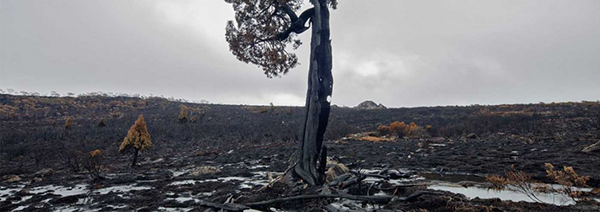 Tasmanian group Silkweed is known and loved for historically themed, hauntingly insightful performances. They are performing another story based on Tasmanian historical stories in Ten Days on the Island. Having previously written and performed shows on Jane Franklin and Maria Island this year they are tackling the 1967 bushfires. Tasmanian group Silkweed is known and loved for historically themed, hauntingly insightful performances. They are performing another story based on Tasmanian historical stories in Ten Days on the Island. Having previously written and performed shows on Jane Franklin and Maria Island this year they are tackling the 1967 bushfires.
Using original compositions, rare archival images, poetry and narrative, the ensemble takes its audiences back to important and fascinating events in Tasmania’s past. FIRE recalls the catastrophic fires of 1967, moving smoothly and soulfully through to the present day and the impact of climate change.
During March around Tasmania. Tickets: http://tendays.org.au/event/fire/
|
|
|
State Library Victoria Fellowships Now Open
|
|
|
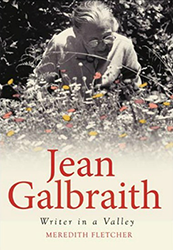
|
|
Meredith Fletcher Publication -
'Writer in a Valley'
|
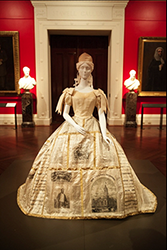
|
Barking Spider Visual Theatre -
'Liberty of the Press'
|
|
|
The State Library of Victoria Fellowships Program is one of the most substantial in Australia. Among these are specialist fellowships in children’s literature, digital media, visual arts, contemporary art, social history, World War I history and Ukrainian studies.
Do you have a creative project or idea that could use the Library’s collection in innovative ways? Each year, the Library offers Creative Fellowships to encourage the original and imaginative use or development of the Library's collections for new work. The State Library and its partners are offering 15 fellowships, collectively worth up to $237,000.
This year, a new Digital Fellowship will be offered for the first time, established to encourage innovative uses of the Library's digitised collections and data.The fellowships are funded by the State Library Victoria Foundation and other program partners, and are awarded annually on the advice of independent expert panels.
Visit the Library Fellows gallery to see examples of the wonderful work undertaken by past fellows and the innovative ways they have presented their research.
The 2017–18 program for the following fellowships is now open. Applications close Sunday 23 April 2017.
|
|
|
National Library Community Heritage Grants Now Open
|
|
|
|
The NLA Community Heritage Grants (CHG) program provides grants of up to $15,000 to community organisations such as libraries, archives, museums, genealogical and historical societies, multicultural and Indigenous groups. The grants are provided to assist with the preservation of locally owned, but nationally significant collections of materials that are publicly accessible including artefacts, letters, diaries, maps, photographs, and audio visual material.
The types of projects supported include:
Significance assessments of collections
Preservation needs assessments of collections
Conservation activities and collection management
Training workshops
In 2016, 77 grants were awarded to many historical society recipients including:
- Australian Jewish Historical Society - Significance assessment of the Sydney Jewish Archives
- Deniliquin & District Historical Society Inc - Preservation needs assessment of the collection
- Coober Pedy Historical Society Inc - Collection Management Software purchase and training, computer purchase
- Australian Lesbian and Gay Archives Inc – Digitisation of the audiovisual collection
- Friends of the Launceston Mechanics' Institute Inc - Conservation Training Workshop
- Bathurst District Historical Society - Significance assessment of the Museum Historical Photograph Collection
- Broome Historical Society Inc - Preservation needs assessment of the collection
- Swan Guildford Historical Society Inc - Archival storage equipment purchase for the textile and archive collections
Guidleines and application form: https://www.nla.gov.au/chg/guidelines
|
|
|
Protecting National Historic Sites - Funding for projects
|
|
|
The Department of the Environment and Energy is pleased to announce the call for applications to the Protecting National Historic Sites 2016-17 Program.
The Program will provide funding to support a range of activities that conserve and protect places (‘Target Places’) identified on Australia’s National Heritage List for their historic heritage values (refer to Appendix A to the Protecting National Historic Sites 2016-17 Application Guidelines).
Eligible activities include:
- those identified in Conservation Management Plans for Target Places;
- the development of a new Conservation Management Plan, revision of an existing Conservation Management Plan, or improved management arrangements for Target Places; or
- maintaining or enhancing the listed historic values of a Target Place, through development of facilities to enhance visitor understanding and physical access to the Target Place.
Information about the Program, including the Guidelines and Application Form, is available at: http://www.environment.gov.au/heritage/grants-and-funding/protecting-national-historic-sites/2016-17
Note: Applications close at 2pm Thursday 6 April 2017.
|
|
|
The FAHS e-Bulletin, No. 161,
24th March 2017
|
|
|
|
|